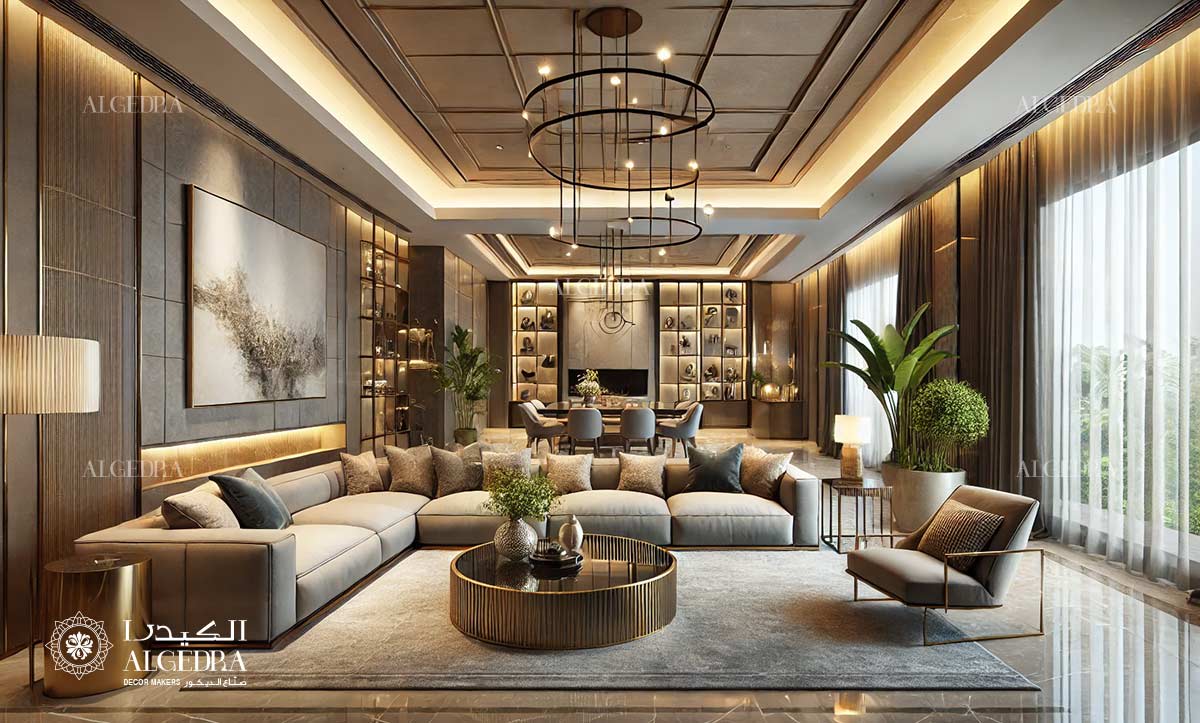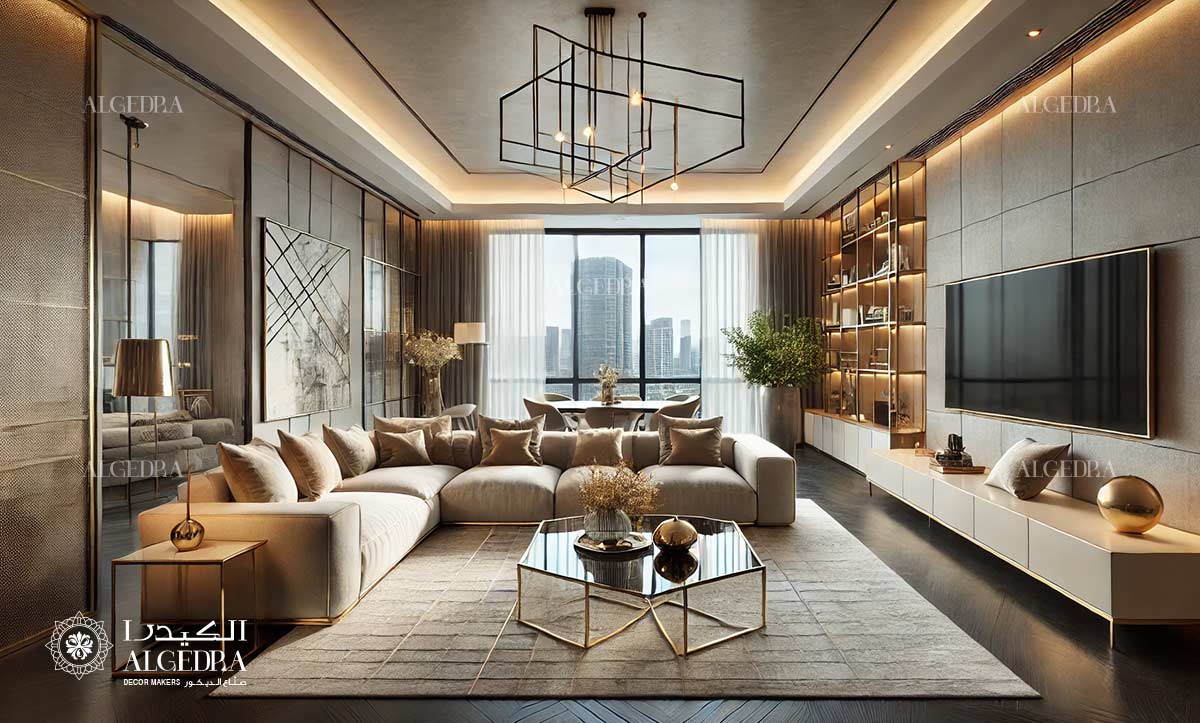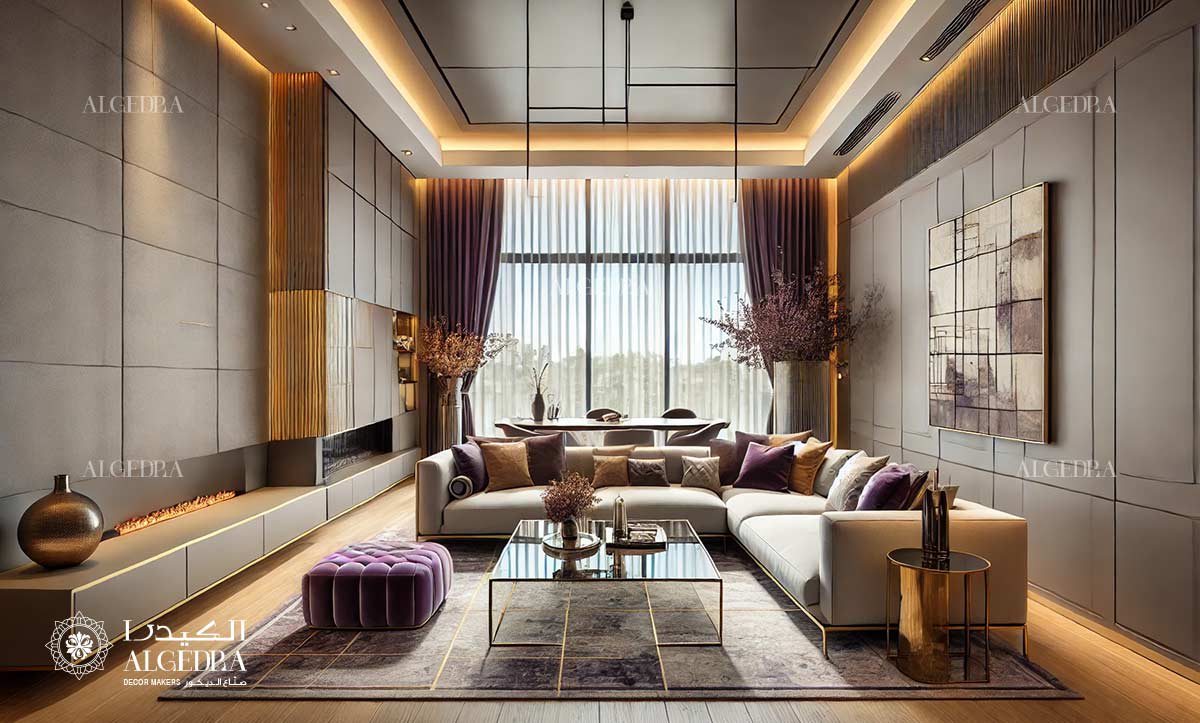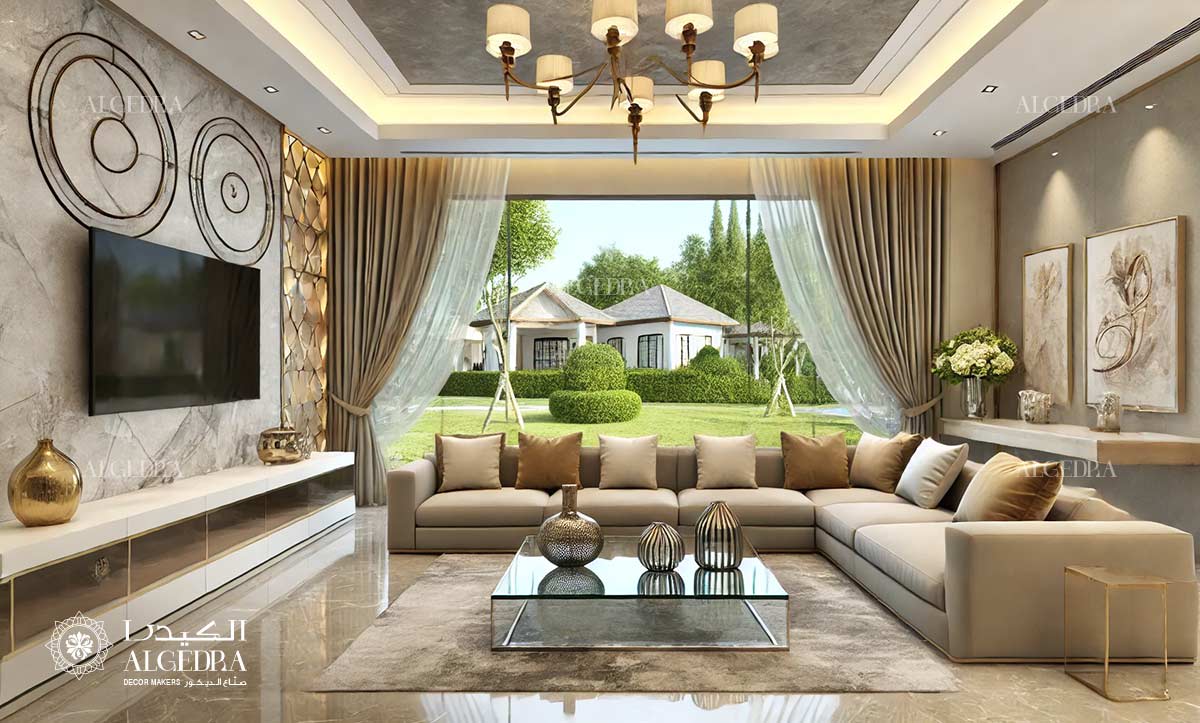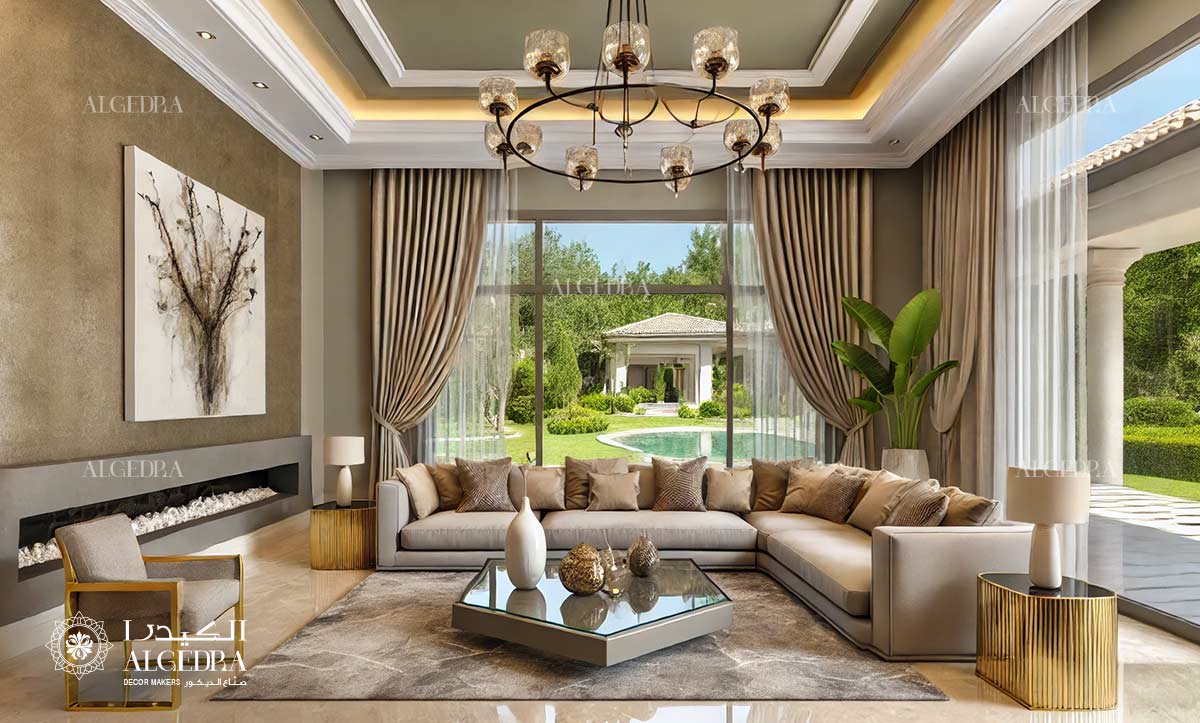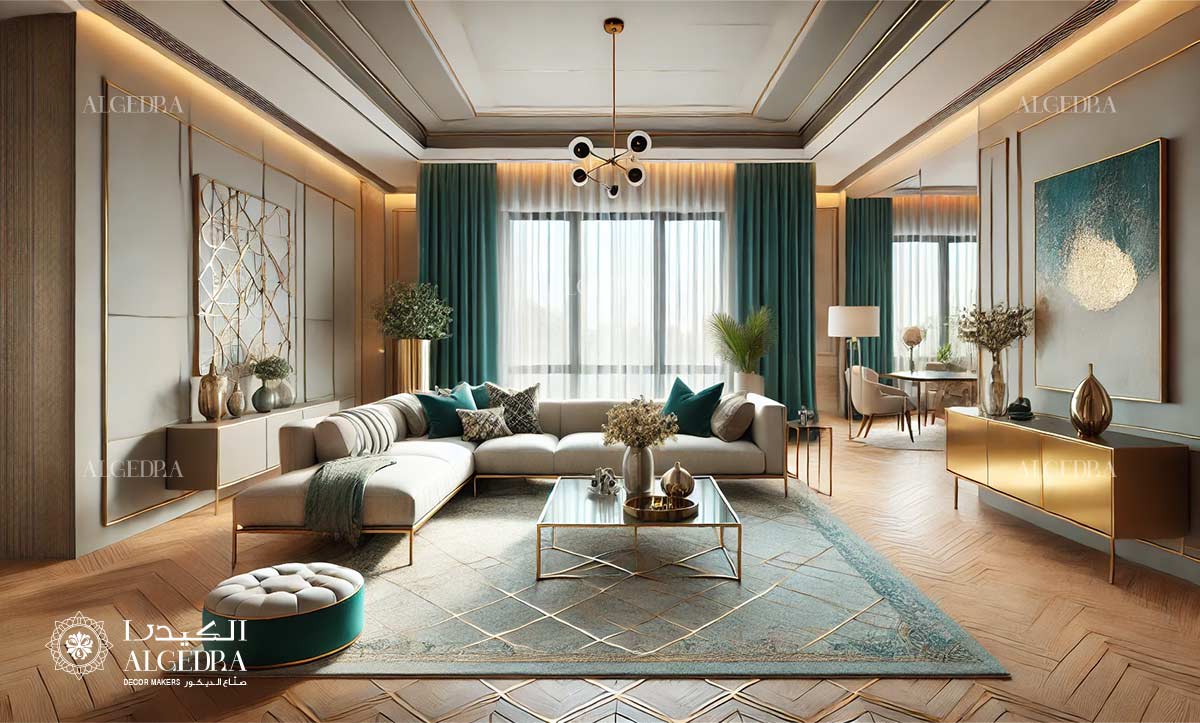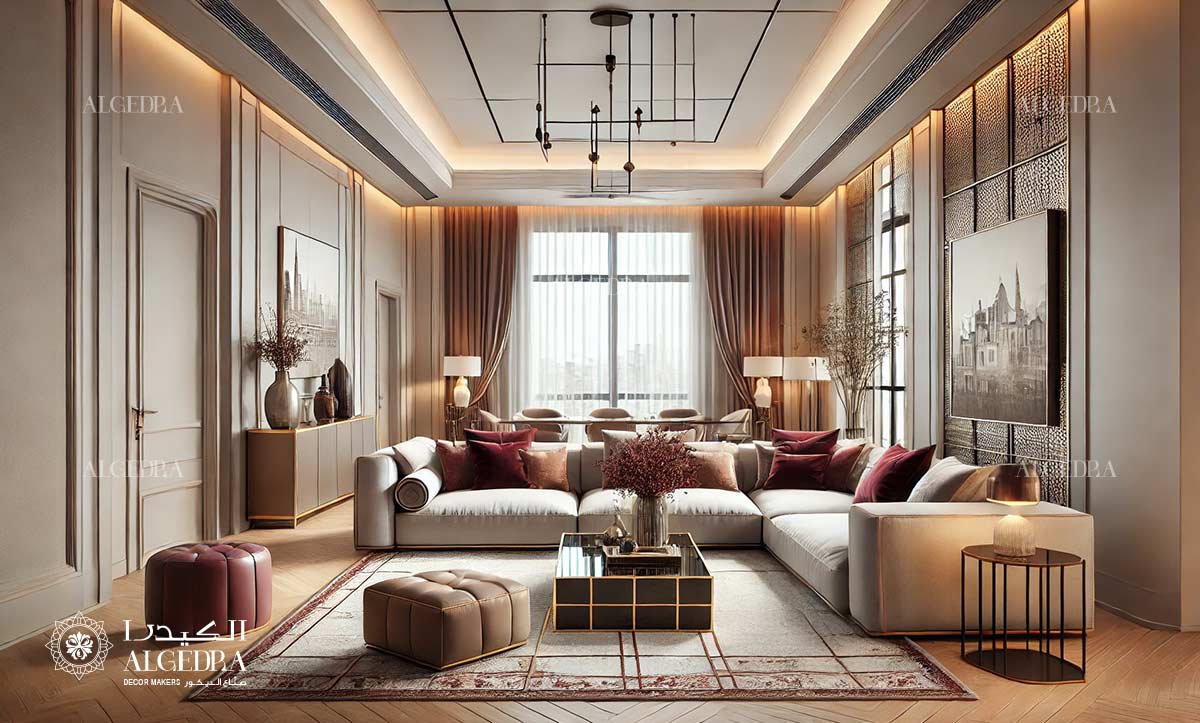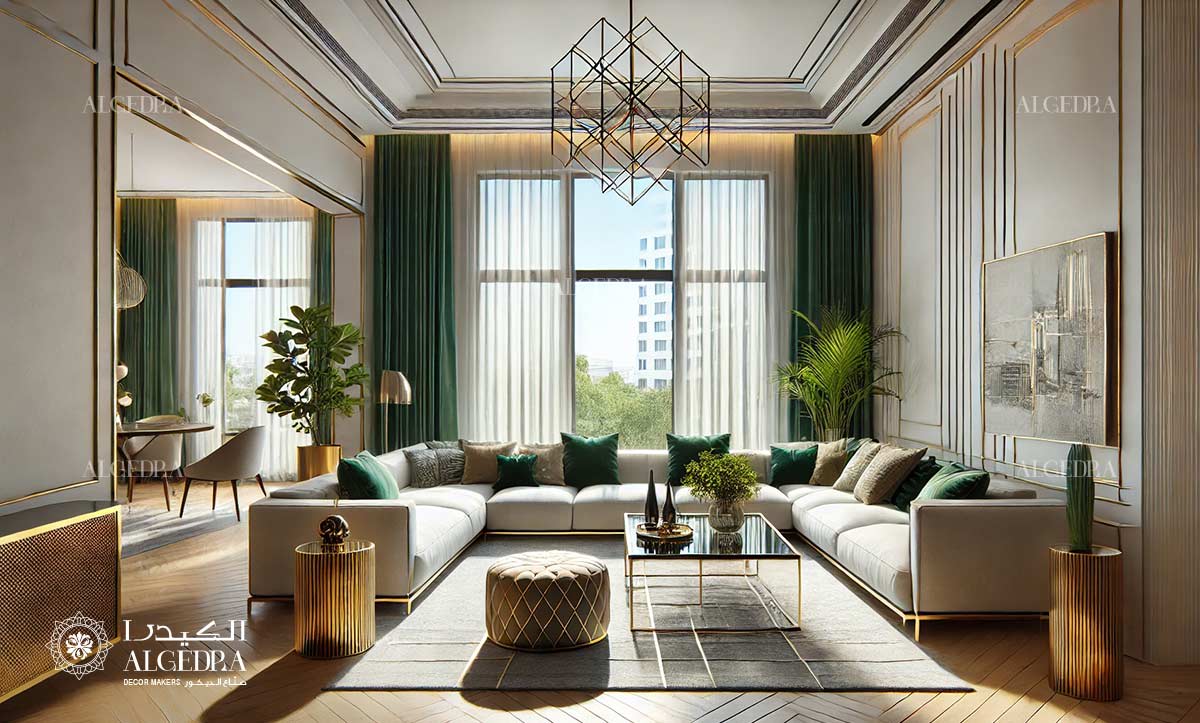Home Page | Blog | The Role of Shapes and Forms in Interior Design Layouts
The Role of Shapes and Forms in Interior Design Layouts
11/22/2024
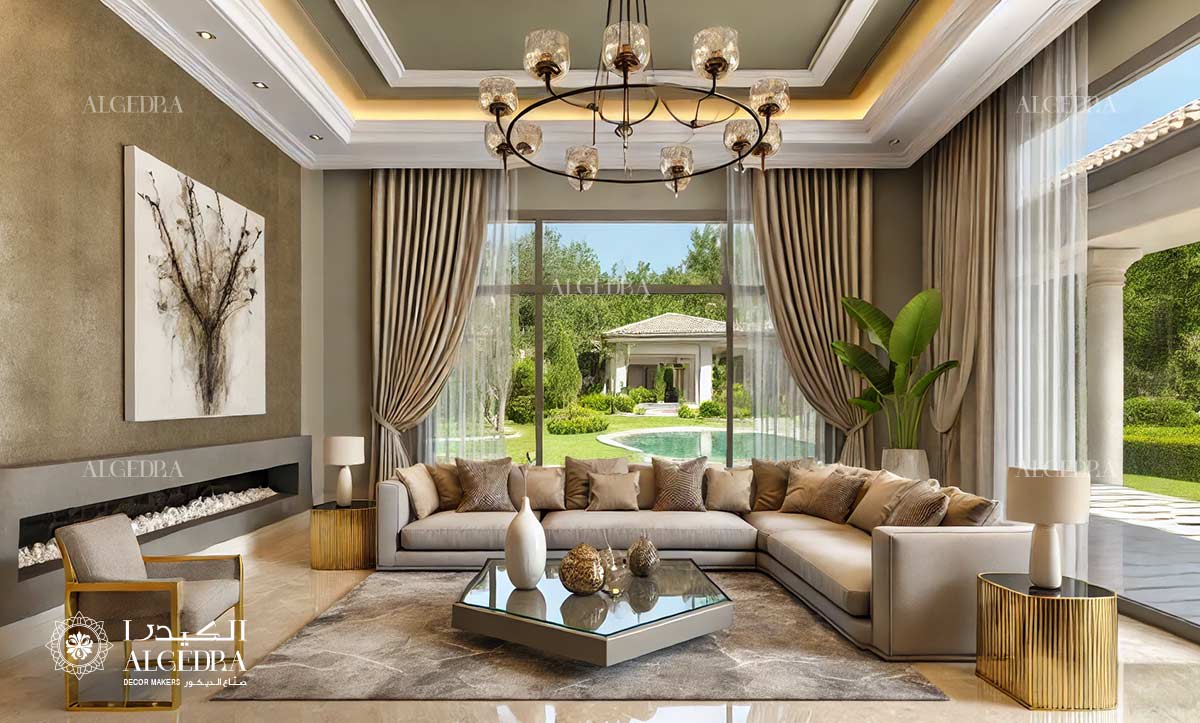
Interior design creates an environment that seems unified and welcoming by mixing creativity and structure. Forms and shapes are crucial to this process, impacting a room's overall appearance, atmosphere, and usability. Any interior may be made into a harmonious and eye-catching space by knowing how these components interact with one another.
1- Understanding Shapes in Interior Design
Shapes are the foundation of any layout. They guide the arrangement of elements in a room. Every object, from furniture to decor, has a distinct shape. These shapes can evoke different emotions and establish a visual rhythm.
Geometric shapes are precise and structured. Circles, squares, and triangles bring order to a design. Rectangular shapes are common in furniture and architecture. Their clean lines often give a room a modern and organized feel.
Organic shapes are softer and more fluid. These forms are inspired by nature. Curved edges and irregular patterns can make a space feel more relaxed. A balance of both geometric and organic shapes creates a visually interesting environment.
2- Forms and Their Impact on Design
Forms take shapes into three dimensions. They define the volume and structure of objects in a room. Forms can be open or closed, angular or rounded. Choosing the right form helps achieve the desired ambiance.
Rounded forms bring softness to a design. They often feel welcoming and approachable. In contrast, angular forms appear bold and strong. Combining these forms adds depth to the design. For example, a round coffee table paired with a rectangular sofa provides contrast while maintaining harmony.
3- Using Positive and Negative Space
Balance between positive and negative space is crucial. Positive space includes the objects in a room. Negative space refers to the empty areas surrounding these objects. Both are equally important in creating a layout that feels complete.
Crowding a space with too many forms can feel overwhelming. Leaving room for negative space allows the design to breathe. This concept is especially relevant in modern and minimalist interiors. Strategic use of empty space highlights key elements and ensures the room feels open.
4- The Psychology of Shapes and Forms
Shapes and forms influence how a space is perceived. They can evoke specific emotions and set the tone for a room. Circular shapes often feel calming and nurturing. These are great for areas meant for relaxation, like bedrooms or living rooms.
Angular shapes convey energy and efficiency. Squares and rectangles work well in offices or kitchens. They reflect structure and functionality. A mix of shapes prevents monotony and keeps the space dynamic.
5- Layering Shapes for Depth
Layering different shapes adds visual interest. Overlapping forms draw the eye and create a sense of depth. Rugs, cushions, and wall art are excellent tools for layering. For instance, a circular rug beneath a rectangular dining table creates a striking focal point.
Furniture placement also affects layering. Sofas and chairs can create frames within a room. Arranging these elements thoughtfully ensures the space feels cohesive.
6- Shapes in Architectural Elements
Architecture provides the structure for interior design. Windows, doors, and ceilings contribute to the overall form of a space. Arched windows or doorways bring elegance and softness. Straight-edged frames give a contemporary look.
Ceilings often feature shapes that enhance the room's design. Coffered ceilings add depth with their geometric grid patterns. Curved or vaulted ceilings make a space feel expansive. Paying attention to these elements elevates the entire layout.
7- Material Choices and Their Interaction with Shapes
Materials influence how shapes are perceived. Hard surfaces like metal or stone emphasize sharp lines. Softer materials like fabric or wood soften edges. A thoughtful mix of textures ensures the design feels balanced.
Reflective materials such as glass or polished metals enhance the visibility of shapes. Matte finishes make them appear subtler. Combining these finishes creates contrast and highlights specific design features.
8- Lighting and Its Effect on Shapes
Lighting plays a key role in defining shapes and forms. Shadows and highlights can alter the perception of a space. Pendant lights emphasize the shapes of furniture below. Wall sconces cast patterns that add texture to flat surfaces.
Natural light interacts with shapes differently throughout the day. Large windows bring attention to organic forms in the morning. At night, artificial lighting transforms the ambiance. Choosing the right lighting fixtures ensures every shape stands out as intended.
9- Color Pairing and Shape Perception
Colors influence how shapes are perceived. Light hues make forms appear larger and more open. Dark tones bring intensity and depth. Using contrasting colors enhances the visibility of shapes in a layout.
Patterns featuring shapes also add character to a design. Geometric prints bring energy, while organic patterns feel soothing. These patterns can be introduced through wallpaper, textiles, or artwork. Keeping them balanced prevents the space from feeling chaotic.
10- Modern Trends in Shape Usage
Modern interiors emphasize clean lines and geometric forms. Open layouts often highlight the simplicity of rectangular furniture. However, incorporating curved shapes adds a contemporary twist. These forms soften the rigidity of straight edges and bring an element of surprise.
Organic shapes and natural materials are increasingly popular. These elements connect indoor spaces with the outdoors. Using such forms creates a harmonious environment.
11- Practical Tips for Using Shapes and Forms
● Start with a focal point. Choose one prominent shape or form to anchor the room.
● Balance is key. Combine large forms with smaller, intricate shapes.
● Avoid overloading the space. Let some shapes stand alone for emphasis.
● Experiment with textures. Use a mix of smooth and rough surfaces.
● Adapt to the room's purpose. Select shapes that match the intended mood.
Shapes and forms are the building blocks of interior design. They influence every aspect of a space, from its visual appeal to its emotional impact. A thoughtful combination of shapes ensures a layout feels intentional and harmonious. Experimenting with these elements can bring any design vision to life.
Looking to create the perfect space? Let us help you design a layout that reflects your unique style. Contact us today to start your interior design project in Dubai, Abu Dhabi or wherever you are, we are here to bring your vision to life!
FREE
CONSUL
TATION
FREE CONSULTATION
TELL US ABOUT YOUR PROJECT
WE WOULD LOVE TO HEAR FROM YOU
Feel free to reach us via this contact form and one of our Design Consultants will get back to you at earliest.
OUR BRANCHES
UAE - DUBAI
+971 52 8111106 | hello@algedra.ae
TURKEY - ISTANBUL
+90 533 701 89 71 | info@algedra.com.tr
Leading Interior Design and Decor Company in Dubai and Abu Dhabi.
Algedra is a reputable, internationally recognized, and one of the most successful interior design companies in Dubai, and Abu Dhabi, which specializes in delivering interior design, architectural, and creative space planning projects throughout GCC, MENA, North Africa, Turkey and Russia.
Algedra is a one-stop solution for all your residential interior design and fit-out needs. We have successfully completed numerous villa interior and exterior design projects, where we integrated quality and originality to deliver interior masterpieces.
ALGEDRA, Interior Design Company in Dubai, is specialized in providing elegant and stunning interior design services for both residential and commercial projects. We turn our clients' dreams into reality, trans- lating their tastes and needs into beautiful and functional spaces.
Since the day we were founded, we have designed and built many branded residences, resorts, hotels, multi-purpose social spaces, and palace designs with different functions and concepts by following the ever-changing design trends over the world.
A key element of our work is a fusion of different cultures and designs, combining Greek, Italian, Eastern and Western influences with British innovation.
As a team of highly qualified interior designers and engineers, Algedra offers complete architectural services from mall design to corporate office design as well as the exterior design of any project based on customers' needs.
Our customers include leading names, we have completed diverse projects in hospitality, landscape, commercial, and residential designs. These projects contain cafes, restaurants, gym, villas, family sitting rooms, bedrooms, kitchens; all showcasing our company's exquisite details and high-end designs.
Residential Interior Design in Dubai
Algedra's interior designers and architects have an important mission: building villas, houses, apartments, condos, and anywhere else where you reside that will fulfill your needs while being structurally safe and sound.
Architectural Designs
There are so many details that go into designing an architectural design project. Every step of the project has been carefully considered for safety and daily comfort by Algedra's experts.
Commercial Design
Conceptualizing spaces for business, to elevate style, and to increase functionality to help enhance the bottom line of a company is vital, as well as employee comfort and interior design too. Our commercial interior designers translate client's concept in ways that are efficient, attractive and provide professional workspaces.
Fit-out Projects
Algedra Interiors delivering high-quality tailored fit-out projects that transform your villas, palaces and commercial spaces.
We're a passionate team of interior designers, architects and engineers. Every day we help clients to solve interior design problems and create engaging spaces!
Wherever you are in Kuwait, Saudi Arabia, Azerbaijan, Qatar, Morocco, Algeria, Tunisia, Libya, Egypt; don't hesitate, contact us to find out more about why we are one of the best interior design companies in Dubai and Abu Dhabi!
